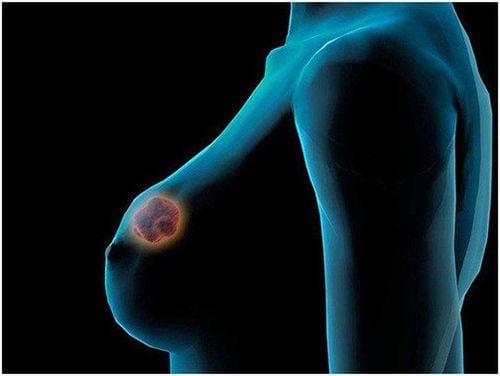Breast cancer is one of the most common cancers among women worldwide. According to the World Health Organization (WHO), millions of new cases are diagnosed annually, with hundreds of thousands of deaths attributed to the disease. However, thanks to advancements in modern medicine, early detection and timely treatment can significantly improve patients’ survival rates.
Among the various stages of breast cancer, Stage II is considered an early stage but has already shown signs of spreading to nearby lymph nodes. Unlike Stage I breast cancer (where the tumor remains localized within the breast), Stage II requires a more aggressive treatment approach to prevent cancer cell proliferation. This article provides a detailed analysis of the characteristics of Stage II breast cancer, current treatment options, and recent medical advancements that enhance treatment effectiveness.
1. Stage II Breast Cancer
Stage II breast cancer is divided into two subcategories—IIA and IIB—based on tumor size and the extent of lymph node involvement.
1.1. Stage IIA
This stage includes the following cases:
-
No detectable tumor in the breast, but cancer cells (larger than 2mm) have spread to 1–3 axillary lymph nodes or lymph nodes near the sternum (detected through sentinel lymph node biopsy).
-
A tumor smaller than 2cm that has spread to 1–3 nearby lymph nodes.
-
A tumor between 2–5cm that has not yet spread to lymph nodes.
Important Notes:
-
If a tumor is 2–5cm but has not metastasized to lymph nodes and is HER2-negative, it may still be classified as Stage I.
-
If a tumor is 2–5cm, HER2-negative, ER-positive (estrogen receptor-positive), PR-negative (progesterone receptor-negative), and has a low Oncotype DX recurrence score (≤9), it is often classified as Stage IA.
1.2. Stage IIB
This stage is characterized by:
-
A tumor between 2–5cm, accompanied by small clusters of cancer cells (0.2–2mm) in the lymph nodes.
-
A tumor between 2–5cm that has spread to 1–3 axillary lymph nodes or lymph nodes near the sternum.
-
A tumor larger than 5cm that has not yet metastasized to lymph nodes.
Special Cases:
-
If a tumor is 2–5cm and has metastasized to 1–3 lymph nodes but is HER2-positive or hormone receptor-positive (ER+/PR+), it may be classified as Stage I due to its favorable response to targeted therapy.
2. Treatment Methods for Stage II Breast Cancer
The choice of treatment depends on several factors, including tumor size, lymph node status, tumor biology (HER2, ER/PR status), and the patient’s overall health. Below are the main treatment methods:
2.1. Surgery
Surgery is the standard approach to removing the tumor and affected lymph nodes. There are two primary types of surgery:
-
Breast-conserving surgery (Lumpectomy): Involves removing the tumor and a small margin of healthy tissue, typically recommended for tumors <5cm. Radiation therapy is usually required afterward to eliminate any remaining cancer cells.
-
Mastectomy: Recommended for larger tumors or cases with a high risk of recurrence. Patients may opt for breast reconstruction immediately after surgery or upon completing other treatments.
Lymph Node Surgery:
-
Sentinel Lymph Node Biopsy (SLNB): Identifies the first lymph node that cancer is likely to spread to.
-
Axillary Lymph Node Dissection (ALND): Performed if cancer is detected in the sentinel lymph node.
2.2. Radiation Therapy
Radiation therapy uses high-energy X-rays to destroy any remaining cancer cells after surgery. It is commonly prescribed after lumpectomy or in cases with a high recurrence risk (e.g., large tumors or lymph node involvement).
2.3. Chemotherapy
Chemotherapy can be administered:
-
After surgery (Adjuvant Chemotherapy): To eliminate residual cancer cells.
-
Before surgery (Neoadjuvant Chemotherapy): To shrink tumors and facilitate easier surgical removal.
Common Chemotherapy Regimens:
-
AC (Doxorubicin + Cyclophosphamide) → Taxane (Paclitaxel/Docetaxel)
-
TC (Docetaxel + Cyclophosphamide)
-
TAC (Docetaxel + Doxorubicin + Cyclophosphamide)
2.4. Hormone Therapy
Used for patients with ER+ or PR+ breast cancer. Common drugs include:
-
Tamoxifen (for premenopausal women)
-
Aromatase Inhibitors (Anastrozole, Letrozole, Exemestane – for postmenopausal women)
-
Ovarian suppression drugs (Goserelin, Leuprolide) to reduce estrogen production
2.5. Targeted Therapy
For patients with HER2-positive breast cancer:
-
Trastuzumab (Herceptin)
-
Pertuzumab (Perjeta)
-
Ado-trastuzumab emtansine (Kadcyla)
-
Lapatinib (Tykerb), Neratinib (Nerlynx)
2.6. Clinical Trials
Clinical trials offer access to novel treatment approaches, such as:
-
Immunotherapy
-
CDK4/6 inhibitors (Palbociclib, Ribociclib)
-
New targeted therapies
Although Stage II breast cancer has begun to spread to lymph nodes, it still has a favorable prognosis if treated aggressively. Treatment choices should be tailored to the tumor’s characteristics and the patient’s overall health. Early detection, adherence to treatment protocols, and regular follow-ups are crucial for improving survival rates and quality of life.
Recommendations:
-
Regular breast cancer screening (ultrasound, mammography) for women aged 40 and older.
-
Monthly self-examinations to detect abnormalities early.
-
Maintaining a healthy lifestyle, balanced diet, and regular exercise to reduce cancer risk.
Hopefully, this article provides valuable insights to help patients and their families better understand Stage II breast cancer treatments, enabling informed decisions in their fight against the disease.

